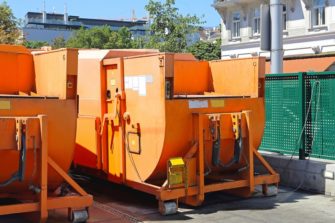
SR&ED funding is utilized every year by thousands of Canadian corporations to fund R&D, delivering Canadian-made innovation and strengthening the Canadian economy. The federal government launched the Scientific Research and Experimental Development Program to fund innovation and maintain the country’s tech competitiveness. SR&ED is administrated by the CRA and is offered in the form of tax credits.
Here is a business guide on how SR&ED funding works.
What is SR&ED funding?

SR&ED funding supports emerging businesses. The SR&ED tax credit has facilitated fast tech adoption, stronger innovation, and assistance to organizations looking to remain competitive in the global field. It’s motivated hiring and market expansion and has helped offset costs associated with R&D projects. This has made SR&ED the single largest source of R&D funding in Canada, rewarding businesses in various sectors.
You do not need to be a science or technology company to apply for SR&ED. The program is focused on supporting R&D projects often done by organizations in agriculture and food processing, information and communication technology, medical devices, independent research, pharmaceuticals, and advanced manufacturing.
SR&ED funding eligibility

Many SR&ED projects are lab-based research, but not all. Some are incremental improvements in product design or processes performed by small-to-medium-sized businesses. Some projects expand over multiple years, while others are short. If you aren’t sure if your project qualifies, consider speaking with an SR&ED consultant.
Your R&D project may prove to be not fruitful. That’s alright. Your SR&ED funding may still go through if you were facing a legitimate scientific or technological challenge, invested in a reasonable hypothesis to build your R&D around, and followed an eligible process. Even in failure, you may have still expanded your knowledge base.
How to apply for SR&ED funding

SR&ED funding applies to R&D that fulfills three points. The R&D must have been done to further some form of technical knowledge, needs to have faced some kind of technical challenge and attempted to solve it, and went through some form of processing to have mitigated or fixed technical challenges.
Documentation is integral to qualifying for funding. You have demonstrated that what was done with R&D was required and logical, as well as outlining the time and funds spent on work, employees, contractors, and expenses. A lack of documentation can mean an SR&ED denial. Timesheets, notebooks, emails, meeting minutes, and any other way to validate and document work could be requested if your claim is chosen for investigation.
How to calculate SR&ED funding

SR&ED funding applies to eligible expenditures, including wages and salaries, R&D-related contracts, materials, and more. Not all costs are covered under SR&ED. It can be a difficult program to navigate if this is your first time applying, understanding what is or isn’t covered. Furthermore, documentation is required to justify the expenditures you are claiming.
The expenditures above and others are not 100% claimed under SR&ED. CCPCs, or Canadian-controlled private corporations, can generally claim about 64% of salaries and wages, 32% of subcontractor fees, and about 42% of material costs. As you fill out your SR&ED application, these numbers will come in handy in understanding what sort of funding you can expect to be approved for.
After applying for SR&ED funding

A corporation has up to 18 months after its fiscal year-end to claim SR&ED. For Canadian-controlled corporations, they are advised to file within six months. They will likely receive a response from the CRA within 60 days. For non-Canadian-controlled corporations, however, claims may take up to twelve months before a response is received.
Funding provided through the SR&ED tax credit program comes in the form of an income tax deduction, an investment tax credit (ITC), or, in some instances, a tax refund. The ITC portion comprises 15-35% of qualified expenditures, depending on the type of organization you are classified as. There are many ways in which ITCs can be used, both in the current tax year and in future years.
SR&ED funding vs other grants

There are other CRA-administrated programs targeting research and development assistance. There could be overlap with SR&ED and other tax programs, which isn’t a problem. However, it’s best to choose only one to apply for. Applying for multiple government-related funding programs may cause future issues and be subjected to having to pay back what was granted.
SR&ED funding can be used in several ways. You can pool the SR&ED credits and deduct them against the current year’s tax income. Alternatively, you can pool and deduct them in a future year. Regarding ITCs, you can use them to reduce your income tax payable or receive a refund, assuming you meet the criteria for an SR&ED tax refund. Unused ITCs can be carried back three years at most or forward twenty years and are applied against the tax payable.









